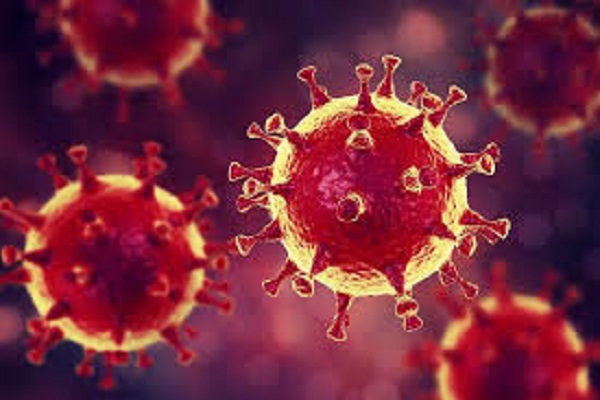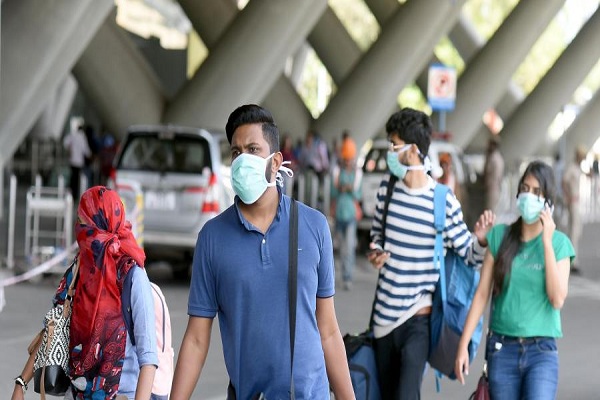Air pollution can trigger asthma; how to tackle it
According to World Health Organization (WHO), 235 million people suffer from asthma globally. It is one of the major non-communicable diseases and the most common chronic disease in children. Asthma can be termed as a chronic disease of the airways that transport air to and from the lungs. The disease causes inflammation and narrowing inside the lung, restricting air one’s supply. This can make breathing difficult and trigger coughing, wheezing and shortness of breath. It is a major problem that interferes with daily activities and may lead to a life-threatening asthma attack.
One may exhibit symptoms like shortness of breath, chest tightness or pain, trouble sleeping caused by shortness of breath, coughing or wheezing, a whistling or wheezing sound when exhaling (wheezing is a common sign of asthma in children) and coughing or wheezing attacks that are worsened by a respiratory virus, such as a cold or the flu. You will also be shocked to know that there is an association between pollution and asthma. Though, asthma cannot be cured but appropriate management can control the disorder and enable people to enjoy good quality of life. Here, we brief you about how pollution is tied to asthma and what should one do to tackle it.

Connection between pollution and asthma

When pollution levels are high we all breathe in harmful substances, but if you have asthma, you’re more likely to get affected. Pollution is more of a risk for people with asthma as pollutants, for example in traffic fumes, or wood smoke, can quickly irritate your airways and trigger asthma symptoms. The particles found in dust, soot, smoke, and diesel fumes are small enough to get right into your lungs, making your airways inflamed and swollen and bringing on asthma symptoms. Pollution can make you more sensitive and more likely to react to your usual asthma triggers (such as house dust mites, pollen, pets, moulds and fungi). Air pollution – whether that’s traffic fumes, smoke or dust particles – is an asthma trigger that’s hard to avoid, which is why it’s so important to manage your asthma well.
Also there are various studies which have established the link between pollution and asthma. According to a research conducted by the Beth Israel Deaconess Medical Center, children living within a football field’s length of major roadways had nearly three times the odds of pediatric asthma compared to children who lived four times farther away. Not only pollution, indoor pollution can also trigger it.

Various studies suggest that indoor air and their potential to cause or exacerbate asthma is the matter of concern.Many different things in the indoor environment can be asthma triggers. Following can be the triggers.

Tobacco smoke: can induce wheezing or an asthma attack in people with asthma. Smoke particles remain in the air long after the cigarette has been put out.
Household dust: Including a range of particles from smoke to pet dander. Smaller particles remain airborne for longer periods, and therefore are more readily inhaled than larger particles that settle out more quickly onto floors, beds, countertops, and other surfaces.
Fragrances: People with asthma may be sensitive to fragrances like perfumes, scented detergents and soaps, personal deodorants, and room deodorizers.
Allergens: Found in indoor air are primarily biological material such as pet dander, cockroach and other insect pest particles, pollen, bacteria, and mold.
Dust mites: Found in household dust, bed linens, pillows, mattresses, and carpets and can trigger asthma attacks.
How to deal with it:
- To avoid air pollution while you are out on the road you must cover your face with a mask or a scarf. Avoid stepping out when it is windy.
- Plan any outdoor activities for early in the day, when air quality tends to be better.
- Don’t spend time in places where there’s lots of traffic.
- Keep your medications and inhaler handy.
Tips to avoid indoor air pollution and manage asthma:
1. One must use the kitchen exhaust when cooking or doing other moisture and odor-producing activities.
2. Use a dehumidifier in the basement. Moisture coming from a home’s foundation can be a contributor to indoor humidity.
3. Poorly maintained floor, wall, and ceiling coverings and furniture may trap pollutants, like dust particles, fumes, and moisture. So, see to it that you clean them from time to time.
4. Conducting an indoor air quality assessment at home can be a good idea. The home should be inspected for potential indoor asthma triggers. Easy-to-fix problems, such as chemical odors and fragrances, contribute to indoor air pollution and have been known to asthma symptoms in sensitive people. If the source of musty smells can be found and removed, it will improve the indoor air quality.
5. Do not smoke in the home, and do not permit others to do so.
6. Use unscented cleaning and personal care products, and use recommended amounts and concentrations.
7. Dust weekly.
8. Reduce clutter, toys, and collections in bedroom.
9. Avoid sleeping or lying on upholstered furniture.
10.Remove carpets that are laid on concrete.
11.Wash bed covers and clothes every week in hot water.
12.Use a dehumidifier if needed.
13.Remove carpets and drapes from the bedroom. Use washable window shades instead.
- Avoid using mosquito repellents (coils ; liquids; mats). Instead, use a Mosquito repellent cream on the skin or use rackets and nets.
- Avoid burning incense sticks ; burning camphor etc, as they are a big source of indoor air pollution.
14.Controlling cockroaches and other insect pests is definitely a challenge! So, store unrefrigerated food in airtight containers.
15.Clean kitchen countertops, cupboards, toasters and other surfaces.
(Disclaimer: Writer is Dr Samir Garde, Chest Physician, Global Hospital. Views expressed are a personal opinion.)
post_id:uld_count:
Cookie not set
Value 1: 0
Value 2: 10
















